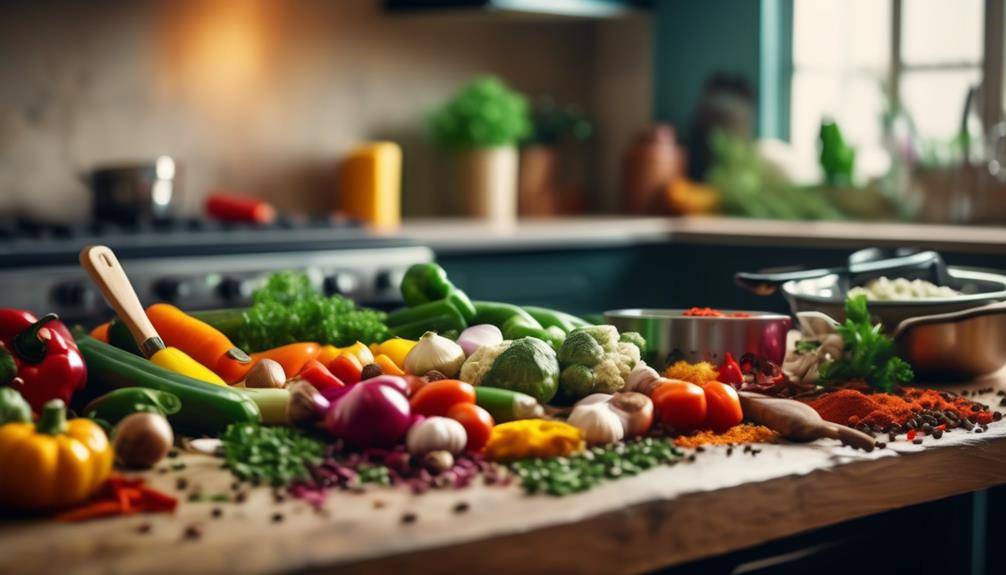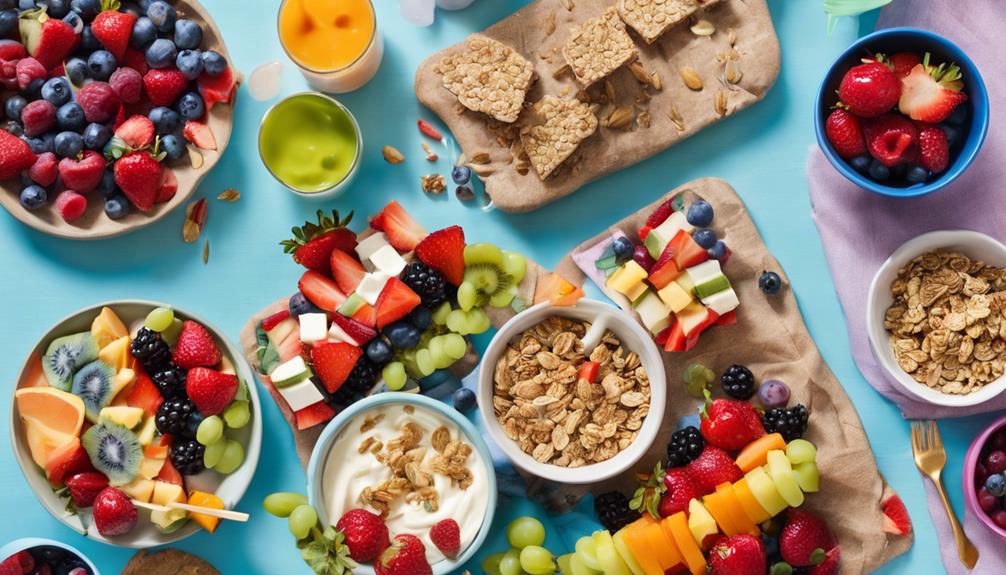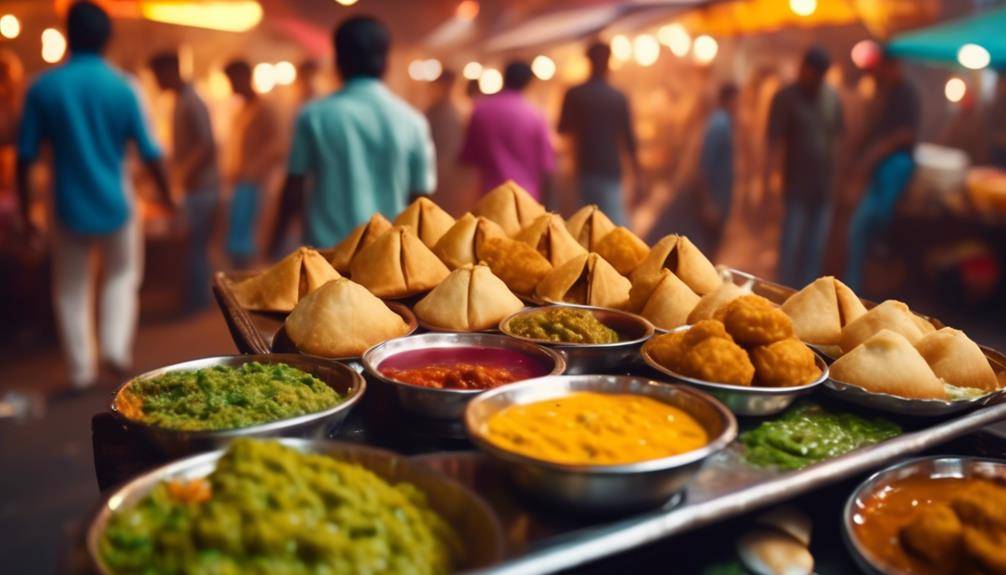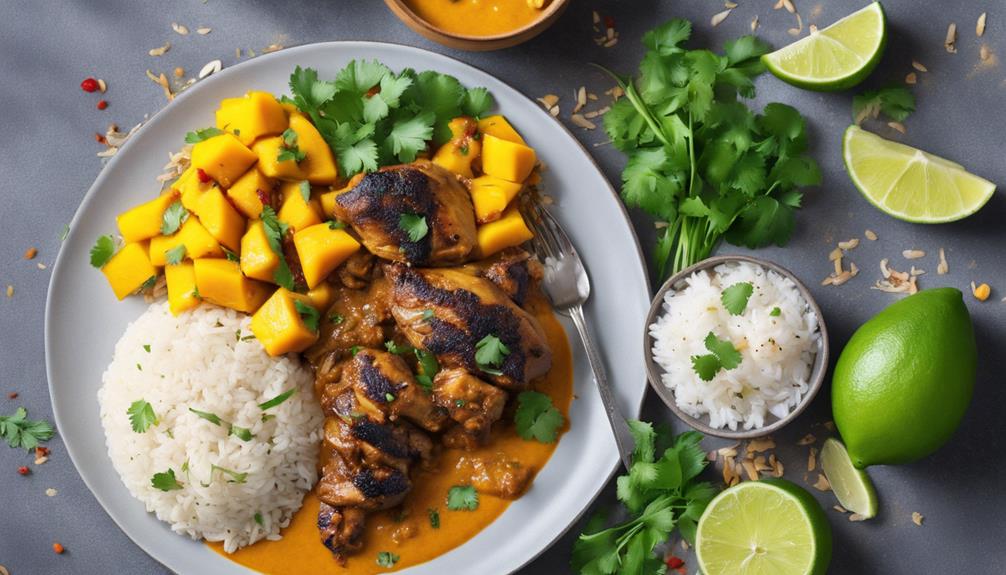12 Beginner Tips For Successful Vegetarian Cooking

Tips For Successful Vegetarian Cooking; Are you tired of feeling like a fish out of water when it comes to vegetarian cooking? Look no further, because we’ve got you covered with 12 beginner tips that will have you cooking up delicious and nutritious meat-free meals in no time. Whether you’re a seasoned carnivore looking to incorporate more plant-based options into your diet or a complete newbie to the vegetarian world, these tips will help you navigate the kitchen with confidence. So, grab your apron and get ready to embark on a culinary adventure that will leave you craving for more.
Stock up on Essential Ingredients
To ensure you have everything you need to create delicious vegetarian meals, it’s time to stock up on essential ingredients. Building a well-stocked pantry is the foundation for successful vegetarian cooking. By having a few key items on hand, you can easily whip up a variety of flavorful and nutritious dishes. Let’s explore some vegetarian pantry essentials that will take your cooking to the next level.
One of the must-haves in your pantry is herb-infused oils. These oils add a burst of flavor to a wide range of dishes. You can find pre-made herb-infused oils in specialty stores, but making your own is simple and cost-effective. Just infuse your preferred herbs, such as rosemary, thyme, or basil, in good quality olive oil. The result is a fragrant and versatile ingredient that can be used in marinades, dressings, and sautés.
Aside from herb-infused oils, there are a few other pantry staples that every vegetarian cook should have. Canned beans, lentils, and chickpeas are excellent sources of protein and can be used in soups, stews, and salads. Whole grains like quinoa, brown rice, and oats provide essential nutrients and serve as a base for many vegetarian dishes. Spices such as cumin, turmeric, and paprika add depth and complexity to your meals.
Learn to Properly Prepare Vegetables
Now that you have stocked up on essential ingredients for vegetarian cooking, it’s time to discover the art of properly preparing vegetables. This crucial step can make all the difference in the taste and texture of your dishes. To help you master the art of vegetable preparation, here are some tips on proper cutting techniques and vegetable cooking methods:
- Proper Cutting Techniques:
- Knife Skills: Invest in a good quality chef’s knife and learn the basic cutting techniques like chopping, dicing, mincing, and julienne. These skills will not only make your cooking more efficient but also ensure evenly cooked vegetables.
- Size Matters: Cut your vegetables into uniform sizes to ensure they cook evenly. This is especially important when stir-frying or sautéing vegetables, as it allows for even cooking and prevents some pieces from being overcooked while others remain undercooked.
- Vegetable Cooking Methods:
- Roasting: Roasting vegetables brings out their natural sweetness and enhances their flavors. Toss them with some olive oil, salt, and pepper, and spread them on a baking sheet. Roast at a high temperature until they are golden and tender.
- Steaming: Steaming vegetables is a great way to retain their nutrients and natural colors. Place the vegetables in a steamer basket over boiling water and cover. Steam until they are tender but still vibrant in color.
Experiment With Different Cooking Methods
Get ready to take your vegetarian cooking to the next level by experimenting with a variety of exciting cooking methods. As a beginner, it’s easy to fall into a routine of using the same techniques over and over again. But by trying out different cooking techniques, you can add new dimensions and flavors to your dishes.
One technique to explore is roasting. Roasting vegetables brings out their natural sweetness and adds a delicious caramelized flavor. Simply toss your favorite vegetables with olive oil, salt, and pepper, and roast them in the oven until they are tender and golden brown. You can also experiment with different herbs and spices to create unique flavor combinations.
Another technique to try is sautéing. This method involves quickly cooking vegetables in a small amount of oil over high heat. It’s a great way to preserve the natural flavors and textures of the vegetables. You can sauté vegetables individually or mix them together for a colorful medley. Add garlic, ginger, or chili flakes for an extra kick of flavor.
Don’t shy away from grilling either. Grilling vegetables adds a smoky flavor and a satisfying char. Slice your vegetables into thick slices and brush them with olive oil before placing them on a preheated grill. Experiment with different marinades or spice rubs to enhance the flavor.
Lastly, consider steaming your vegetables. Steaming is a gentle cooking method that retains the vegetables’ nutrients and vibrant colors. It’s perfect for delicate vegetables like broccoli, asparagus, and green beans. Serve them with a drizzle of lemon juice or a sprinkle of toasted almonds for a refreshing and light dish.
Master the Art of Seasoning
Ready to take your vegetarian cooking to the next level? Mastering the art of seasoning is essential for creating mouthwatering dishes that burst with flavor. From experimenting with spice blends to finding the perfect herb combinations, you’ll learn how to add depth and complexity to your meals. And don’t forget the importance of balancing salt and acidity to bring out the best in your ingredients. Get ready to elevate your culinary skills and wow your taste buds!
Spice Blends for Flavor
Enhance your vegetarian dishes with the art of seasoning through the mastery of spice blends for flavor. Spice blends can elevate the taste of your dishes and add depth to your cooking. Here are some herb pairing suggestions and homemade spice blends to help you create delicious vegetarian meals:
- Herb Pairing Suggestions:
- Basil and oregano: Perfect for Italian-inspired dishes like pasta or pizza.
- Cumin and coriander: Ideal for adding a warm, earthy flavor to dishes like curries or roasted vegetables.
- Homemade Spice Blends:
- Garam masala: A fragrant blend of spices like cinnamon, cardamom, and cloves, perfect for Indian cuisine.
- Cajun seasoning: A mix of paprika, cayenne pepper, and garlic powder, great for adding a spicy kick to dishes like jambalaya or roasted potatoes.
Experiment with different spice blends and herb pairings to find the perfect combination that suits your taste buds. With these tips, you’ll be able to create vegetarian dishes bursting with flavor and impress your friends and family with your culinary skills.
Herb Combinations for Depth
Take your vegetarian dishes to the next level by mastering the art of seasoning with herb combinations that add depth and complexity to your cooking. Herb pairings are a great way to maximize flavor and create a harmonious taste profile in your dishes. Certain herbs work well together, enhancing each other’s flavors and creating a symphony of taste.
For example, the classic combination of rosemary and thyme adds a savory and earthy note to roasted vegetables. Basil and oregano, on the other hand, bring a fresh and fragrant dimension to tomato-based dishes like pasta sauces or pizzas. Experimenting with different herb combinations can open up a world of possibilities and take your vegetarian cooking to new heights. So don’t be afraid to get creative and explore the wonderful world of herbs!
Balancing Salt and Acidity
Now that you’ve mastered the art of herb combinations for depth in your vegetarian cooking, it’s time to explore the next crucial element: balancing salt and acidity to truly master the art of seasoning.
Balancing salt and acidity is essential in creating well-rounded flavors in your dishes. Here are some techniques to help you achieve this balance:
- Importance of balancing salt and acidity:
- Enhances the overall taste of the dish
- Helps bring out the flavors of other ingredients
- Techniques for balancing salt and acidity:
- Use a combination of salt and acid, such as lemon juice or vinegar, to add brightness to your dishes
- Taste as you go and adjust the seasoning accordingly to achieve the desired balance
Understanding flavor profiles is also key to achieving a well-balanced dish. Experiment with sweet and savory combinations to create interesting contrasts and harmonies in your vegetarian cooking. Remember, mastering the art of seasoning is all about finding the perfect balance to elevate your dishes to the next level.
Incorporate Plant-Based Proteins Into Your Meals
Looking to add more plant-based proteins to your meals? There are plenty of protein-rich meat alternatives available that can satisfy your cravings. Whether you’re a beginner or an experienced cook, boosting your protein intake can be as simple as getting creative with plant-based proteins like tofu, tempeh, and legumes.
Protein-Rich Meat Alternatives
Enhance your vegetarian meals with these protein-packed alternatives that will leave you feeling satisfied and nourished. Incorporating plant proteins into your diet doesn’t have to be boring or repetitive. Get creative with these protein alternatives:
- Tofu: This versatile ingredient can be marinated, grilled, or stir-fried to add a meaty texture to your dishes. It’s a great source of protein and can absorb any flavor you choose.
- Tempeh: Made from fermented soybeans, tempeh is a delicious and nutritious option. It has a nutty flavor and can be sliced, grilled, or crumbled into your favorite recipes.
- Quinoa: This ancient grain is not only high in protein but also a complete source of essential amino acids. Use it as a base for salads, stir-fries, or as a stuffing for vegetables.
- Lentils: These legumes are packed with protein, fiber, and essential nutrients. They can be used in soups, stews, or as a meat substitute in burgers and meatballs.
Incorporating these protein-rich alternatives into your meals will not only satisfy your cravings but also provide you with the essential nutrients your body needs. So get creative and enjoy the benefits of plant-based proteins!
Boosting Protein Intake
Incorporating plant-based proteins into your meals is a delicious and nutritious way to boost your protein intake and support your overall health and well-being. There are plenty of plant-based protein sources that can easily be incorporated into your vegetarian recipes. Legumes like chickpeas, lentils, and black beans are excellent sources of protein and can be used in a variety of dishes such as soups, stews, and salads. Quinoa, a complete protein, is another great option to add to your meals.
It can be used as a base for grain bowls or as a substitute for rice or pasta. Nuts and seeds, such as almonds, chia seeds, and hemp seeds, are also packed with protein and can be sprinkled on top of your dishes for an added crunch. By including these plant-based protein sources in your recipes, you can easily meet your daily protein requirements while enjoying a variety of delicious and satisfying meals.
Creative Plant-Based Proteins
Get ready to take your vegetarian cooking to the next level by exploring a world of creative plant-based proteins that will add a delicious twist to your meals. When it comes to plant-based protein sources, the options are endless. Here are two sub-lists to paint a picture for you:
1. Legumes and Pulses
- Lentils: These tiny legumes are packed with protein, fiber, and iron. Use them in soups, stews, or even make lentil burgers.
- Chickpeas: Versatile and nutritious, chickpeas can be used to make hummus, falafel, or roasted for a crunchy snack.
2. Grains and Seeds
- Quinoa: Known as a complete protein, quinoa is a great substitute for rice or pasta. Try making quinoa salads or use it as a stuffing for peppers.
- Chia Seeds: These tiny powerhouses are rich in protein, omega-3 fatty acids, and fiber. Add them to smoothies, sprinkle on top of yogurt, or make chia pudding.
Incorporating these creative plant-based proteins into your meals will not only provide essential nutrients but also add exciting flavors and textures to your vegetarian dishes. So get creative and enjoy the wide range of vegetarian protein options available to you.
Get Creative With Vegetarian Substitutes
Expand your culinary horizons and experiment with exciting vegetarian substitutes that will add depth and flavor to your meals. Vegetarian cooking is not just about removing meat from your dishes; it’s about finding innovative ways to recreate the flavors and textures you love. By exploring vegetarian meat alternatives and employing innovative cooking techniques, you can create mouthwatering dishes that even the most dedicated carnivores will enjoy.
One popular vegetarian meat alternative is tofu. Made from soybeans, tofu is incredibly versatile and can be used in a variety of dishes. It can be marinated, grilled, or sautéed to add a savory and satisfying element to your meals. Another option is tempeh, which is made from fermented soybeans. It has a nutty flavor and a firm texture, making it a great substitute for meat in stir-fries, sandwiches, and salads.
If you’re looking for a meaty texture, consider using seitan. Made from wheat gluten, seitan has a chewy and dense texture that is similar to meat. It can be seasoned and cooked in various ways, such as grilling or braising, to create delicious and satisfying dishes.
For a seafood alternative, try using nori or seaweed. Nori can be used to wrap sushi or added to soups and stews to impart a subtle oceanic flavor. Seaweed can also be used to make vegan seafood dishes like kelp noodles or seaweed salads.
Incorporating these vegetarian substitutes into your cooking will not only add depth and flavor to your meals but also allow you to explore new and exciting culinary possibilities. So go ahead, get creative, and let your imagination run wild in the kitchen.
Plan Your Meals in Advance
Are you tired of scrambling at the last minute to figure out what to cook for dinner? Planning your meals in advance can be a game-changer for beginner vegetarian cooks. Not only does it help you stay organized and save time, but it also allows you to make balanced nutritional choices, ensuring that you’re getting all the essential nutrients your body needs. So, grab a pen and paper, and let’s dive into the benefits of menu planning!
Menu Planning Benefits
Maximize your culinary creativity and ensure a stress-free vegetarian journey by harnessing the power of menu planning and preparing your meals in advance. Menu planning benefits are abundant and can save you time and effort in the long run. Here’s how:
- Efficient grocery shopping: With a well-planned menu, you can create a comprehensive shopping list, ensuring you have all the ingredients you need for the week. Say goodbye to multiple trips to the grocery store and hello to streamlined shopping.
- Time-saving meal prep: By dedicating a specific time to prep your meals in advance, you can save precious time during busy weekdays. Chop vegetables, cook grains, and marinate tofu ahead of time, making cooking a breeze when you’re ready to eat.
Time-Saving Meal Prep
Now that you understand the benefits of menu planning, it’s time to dive into the exciting world of time-saving meal prep for your vegetarian cooking journey. Time-saving tips and meal prep hacks can make a significant difference in your ability to cook delicious and healthy meals efficiently. One of the best ways to save time is by planning your meals in advance. Take a few minutes at the beginning of each week to decide what you’ll be cooking and create a shopping list. This will not only save you time during the week but also ensure that you have all the necessary ingredients on hand.
Another time-saving tip is to batch cook. Prepare large quantities of staple ingredients such as grains, beans, and vegetables, and store them in the refrigerator or freezer. This way, when you’re ready to cook, you can simply grab the pre-cooked ingredients and whip up a meal in no time. Additionally, consider investing in time-saving kitchen gadgets like a food processor or a slow cooker. These appliances can help you chop, blend, and cook ingredients more efficiently, saving you valuable time in the kitchen. By implementing these time-saving tips and meal prep hacks, you’ll be able to enjoy delicious vegetarian meals without spending hours in the kitchen.
Balanced Nutritional Choices
To ensure a balanced and nutritious vegetarian diet, it is essential to plan your meals in advance. Balanced meal planning means incorporating a variety of plant-based protein sources into your meals. Here are some tips to help you create balanced and satisfying vegetarian meals:
- Make sure to include a variety of plant-based protein sources such as beans, lentils, tofu, tempeh, and quinoa. These foods are not only rich in protein but also provide essential nutrients like iron and zinc.
- Include a mix of vegetables, fruits, whole grains, and healthy fats in your meals. This will help you get a wide range of vitamins, minerals, and fiber.
- Don’t forget to add some healthy fats like avocados, nuts, and seeds to your meals. These fats are important for proper nutrient absorption and help keep you feeling full and satisfied.
Embrace International Flavors
Expand your culinary horizons by incorporating flavors from around the world into your vegetarian cooking repertoire. Embracing international flavors not only adds excitement to your meals but also allows you to explore new cuisines and create unique dishes that are bursting with taste. With international fusion becoming increasingly popular, there are countless possibilities for creating delicious vegetarian dishes inspired by different cultures.
One way to embrace international flavors is by experimenting with herbs and spices. Each cuisine has its own unique blend of seasonings that can elevate your vegetarian dishes to a whole new level. For example, you can add cumin and coriander to your Mexican-inspired dishes for a burst of flavor, or use ginger and lemongrass to infuse an Asian twist into your stir-fries.
Another way to incorporate international flavors is by trying out new ingredients. For instance, you can use tofu or tempeh to create plant-based versions of classic Asian dishes like stir-fried noodles or tofu curry. You can also explore the world of legumes and grains, such as lentils and quinoa, which are staple ingredients in Mediterranean and Middle Eastern cuisines.
Don’t be afraid to get creative and mix different cuisines together. For example, you can make a Mexican-inspired curry by combining the flavors of cumin, chili powder, and coriander with traditional Indian curry ingredients like turmeric and garam masala.
Don’t Be Afraid to Try New Recipes
As you continue to explore the world of vegetarian cooking and embrace international flavors, it’s important to remember that trying new recipes is a key ingredient in taking your culinary skills to the next level. Don’t be afraid to step out of your comfort zone and experiment with different flavors and techniques. Here are some reasons why trying new recipes is crucial for your vegetarian cooking journey:
- Vegetarian Recipe Inspiration: Trying new recipes opens up a world of possibilities and keeps your meals exciting and varied. Whether it’s a spicy Indian curry, a fresh Mediterranean salad, or a flavorful Thai stir-fry, there are countless vegetarian recipes waiting to be discovered. Exploring new recipes will inspire you to create unique and delicious meals that will satisfy both your taste buds and your desire for adventure in the kitchen.
- Overcoming Cooking Fears: Trying new recipes allows you to overcome any fears or doubts you may have about cooking. It’s natural to feel apprehensive when trying something new, but by challenging yourself and trying new recipes, you will gain confidence in your abilities. Don’t be discouraged if your first attempt doesn’t turn out perfectly. Every mistake is an opportunity to learn and grow as a cook. Embrace the process, have fun, and remember that practice makes perfect.
Make Use of Herbs and Spices
Get ready to elevate your vegetarian dishes to new heights by harnessing the power of herbs and spices. Adding herbs and spices to your cooking not only enhances the flavors of your meals but also adds depth and complexity. The key to successful flavor combinations lies in understanding spice pairings and experimenting with different herbs to create the perfect balance.
When it comes to spice pairings, there are endless possibilities. For example, if you’re making a curry, try combining cumin, coriander, turmeric, and garam masala for a rich and aromatic flavor. Or, if you’re looking to add a kick to your Mexican-inspired dishes, consider using chili powder, cayenne pepper, and paprika. The combination of these spices will create a bold and fiery taste that will leave your taste buds tingling.
Incorporating herbs into your vegetarian cooking is another way to enhance the flavors of your dishes. Fresh herbs like basil, cilantro, parsley, and dill can add a burst of freshness and vibrancy to your meals. Sprinkle some chopped basil on top of a Caprese salad or add a handful of cilantro to your homemade guacamole. The possibilities are endless.
Experimenting with different flavor combinations is the key to creating delicious vegetarian dishes. Don’t be afraid to think outside the box and try new spice pairings and herb combinations. You might be surprised by the incredible flavors you can create. So, go ahead and unleash your creativity in the kitchen and take your vegetarian cooking to new heights with the power of herbs and spices. Your taste buds will thank you.
Practice Time-Saving Techniques
To maximize efficiency in the kitchen, embrace time-saving techniques that will streamline your vegetarian cooking process. By implementing these techniques, not only will you save time, but you’ll also experience the benefits of menu planning. Here are some tips to help you become a pro at saving time in the kitchen:
- Prep in advance: Spend some time on the weekends or your day off prepping ingredients for the week. Chop vegetables, wash and dry greens, and cook grains and legumes in advance. This way, when it’s time to cook, everything is ready to go, saving you precious minutes during the week.
- One-pot wonders: Opt for one-pot meals that require minimal preparation and clean-up. Soups, stews, and stir-fries are excellent choices. Not only do these dishes save you time, but they also allow flavors to meld together, resulting in delicious and satisfying meals.
- Utilize kitchen gadgets: Invest in time-saving kitchen gadgets like food processors, blenders, and slow cookers. These tools can chop, blend, and cook while you focus on other tasks. They can be a real game-changer, especially when you have a busy schedule.
- Double up: When cooking, consider making larger portions and freezing the leftovers. This way, you’ll have ready-made meals for those hectic days when you don’t have time to cook. It’s a great way to save time and ensure you always have healthy food on hand.
Enjoy the Journey and Have Fun in the Kitchen!
Now that you’ve mastered the art of time-saving techniques in the kitchen, it’s time to embark on a culinary journey filled with enjoyment and fun! As you dive deeper into the world of vegetarian cooking, you’ll discover the joy of experimentation and learning to love vegetables in new and exciting ways.
Cooking is not just about following recipes; it’s about discovering your own unique style and preferences. So, don’t be afraid to try new ingredients or techniques. Allow yourself the freedom to play around in the kitchen, tasting and adjusting as you go along. This journey of experimentation will not only expand your cooking skills but also your taste buds.
One way to make the journey more enjoyable is by exploring the vast variety of vegetables available. From the earthy flavors of root vegetables like carrots and potatoes to the vibrant sweetness of bell peppers and tomatoes, each vegetable has its own distinct taste and texture. Take the time to appreciate and savor these flavors. Try roasting vegetables to bring out their natural sweetness or sautéing them with fragrant herbs and spices for added depth of flavor.
Incorporating vegetables into your meals can also be a fun and creative process. Experiment with different cooking methods, such as grilling, steaming, or stir-frying, to achieve different textures and flavors. Don’t be afraid to mix and match vegetables in different combinations to create colorful and nutritious dishes. Remember, the more you experiment, the more you’ll learn about the incredible versatility of vegetables.
Frequently Asked Questions: Tips For Successful Vegetarian Cooking
How Can I Make Vegetarian Meals That Are High in Protein?
You can make protein-packed vegetarian meals by incorporating plant-based sources of protein. Try adding beans, lentils, tofu, quinoa, and tempeh to your dishes. These ingredients are not only nutritious but also delicious.
Are There Any Vegetarian Substitutes for Common Meat Ingredients Like Chicken Broth or Bacon?
Looking for vegetarian alternatives to chicken broth or bacon? Check out some tasty options like vegetable broth or tempeh bacon. These substitutes will add flavor and texture to your dishes without compromising your vegetarian lifestyle.
How Can I Ensure My Vegetarian Meals Are Balanced and Nutritious?
To ensure your vegetarian meals are balanced and nutritious, it’s important to plan your meals ahead of time. Incorporate a variety of vegetables in your dishes to maximize flavor and nutritional value.
What Are Some Time-Saving Techniques for Preparing Vegetarian Meals?
Looking for quick and easy vegetarian meal ideas? Meal prepping is the key! Save time by chopping veggies in advance, cooking large batches, and freezing leftovers. With these time-saving techniques, you’ll have delicious and nutritious meals in no time.
How Can I Add International Flavors to My Vegetarian Cooking?
To add international flavors to your vegetarian cooking, start by exploring new vegetarian ingredients. Then, incorporate spices from different cuisines. This will not only expand your culinary horizons but also make your dishes more exciting and flavorful.
Conclusion
So there you have it, 12 beginner tips for successful vegetarian cooking. With these tips in mind, you can embark on a culinary journey that is not only delicious and nutritious but also fulfilling and exciting. Remember to stock up on essential ingredients, learn proper vegetable preparation, experiment with cooking methods, and master the art of seasoning. Don’t be afraid to try new recipes, incorporate plant-based proteins, make use of herbs and spices, and practice time-saving techniques. Enjoy the journey and have fun in the kitchen!








